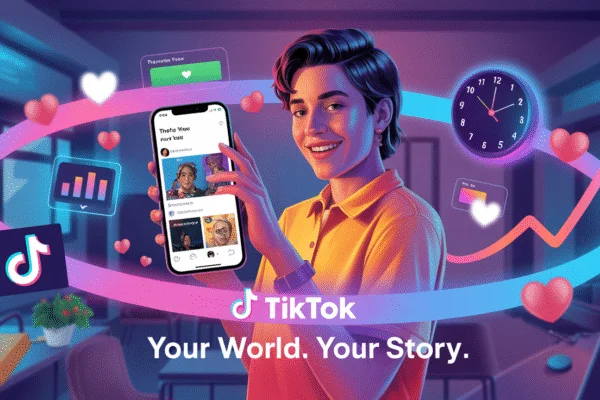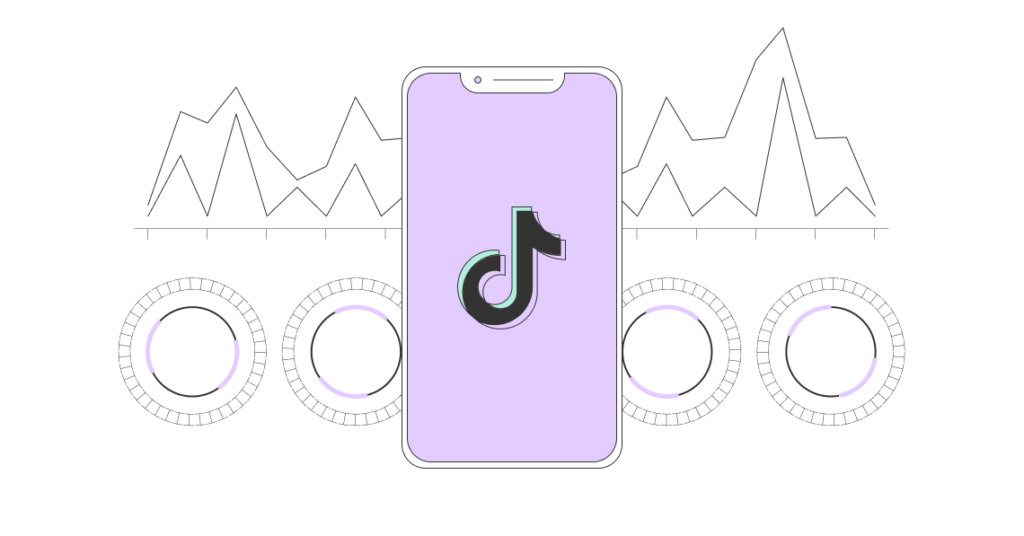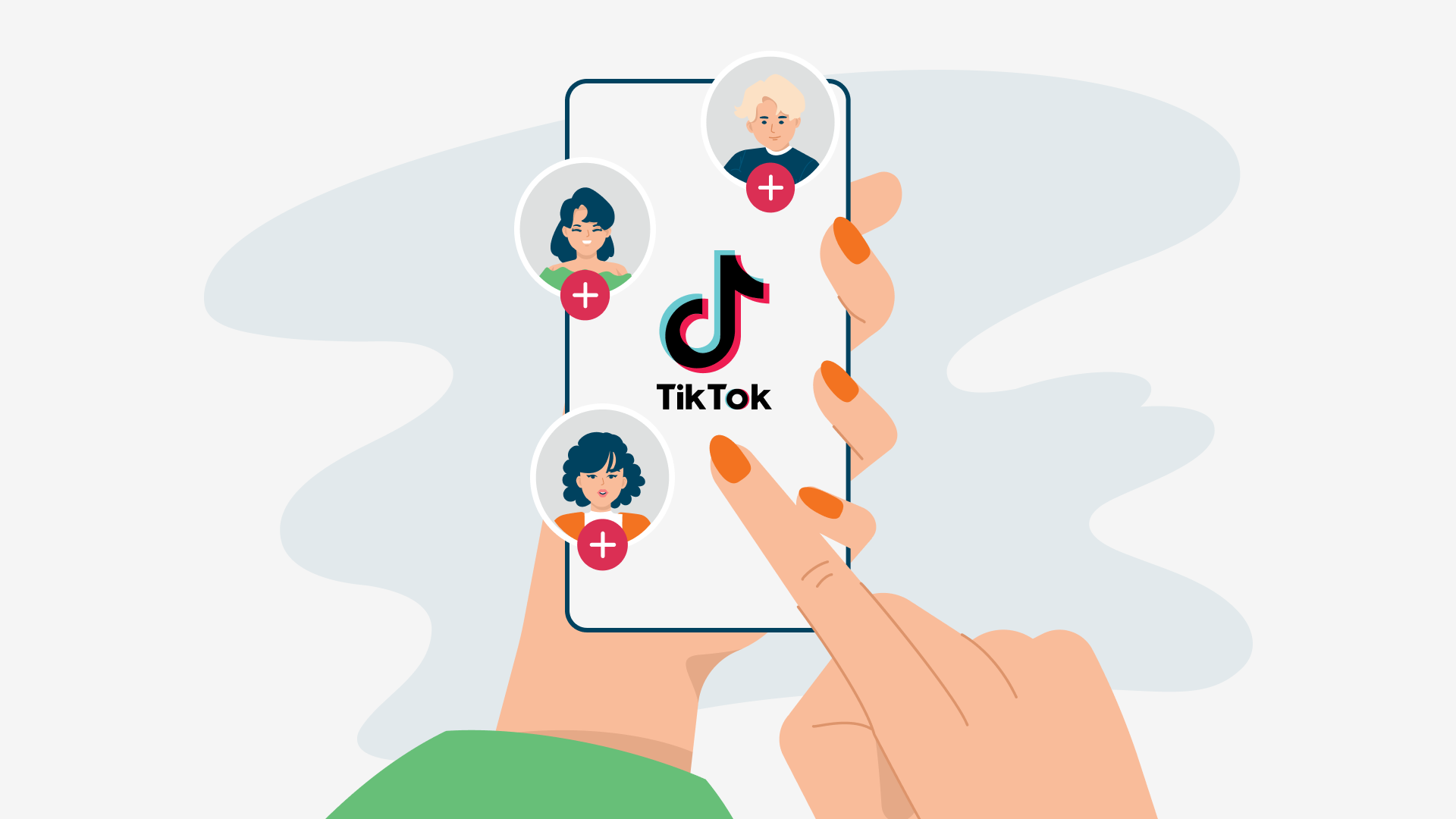Whether it be kicking people’s legs while they jump or shouting hit or miss at bus stations, you’ll find a lot of weird trends that find their start on TikTok. The service is known for its wacky short-form videos that incorporate music and dance. Everything that trends on TikTok does so under the influence of the algorithm.
If you or anyone you know would like to be the next trendsetter, then the best thing to do is understand how the algorithm works. This article will explain what the TikTok algorithm is, how it works, and provide 10 practical tips to help your content go viral. Whether you’re a new creator or looking to boost your visibility, these insights will guide you in creating content that resonates and thrives on TikTok.
Table of Contents
What is the TikTok Algorithm?
It’s an open secret that algorithms, especially those found in social media, work in strange ways. However, all of them are purpose-built to perform a very similar function. The goal is to take a specific piece of content and take it all the way to an end user’s “recommended” page. On TikTok, this is mostly known as the “For You” page.
These recommendations are made through analysis of patterns attributed to users using key metrics. These metrics include the kind of content you watch, how long you watch certain content over others, what content you actively engage with, and so on and so forth. The end goal is to keep you watching for as long as humanly possible.
Of course, making sure you watch is only half the battle. The only way for you to keep the app open is to make sure you keep being engaged. And to be engaged is to obviously be entertained. It may sound like a bad thing, but it’s actually not. Most of your recommendation is built around your preferences and what you like. You get a good experience, and the app gets a daily user. It’s a win-win.
TikTok vs Other Platforms
As stated earlier, every algorithm shares some similarity with the other. However, by the very nature of being custom built, each has its own set of key differences in what content is prioritized. Here’s a brief overview of each and every one of them and how theirs differs from TikTok.
Much like TikTok, Instagram’s algorithm also focuses on user engagement, showing posts and stories based on what users have interacted with most in the past. The key difference is in the fact that Instagram places a stronger emphasis on people the user is connected to as the priority. So if you’re scrolling through your Insta feed, you’re more likely to see posts from family and friends before you do other people.
Youtube
YouTube’s algorithm is the most similar to that of TikTok. YouTube’s algorithm also heavily relies on both watch time and interaction. It recommends videos based on a user’s viewing history and preferences. However, the key difference lies in the way both these websites approach their algorithms. YouTube is more focused on getting long-form content out there and supporting individual creators and personalities. TikTok is far more fast-paced and quick-thinking when it comes to its approach. Trends on TikTok tend to be quick and in short bursts rather than lengthy.
Facebook has the most basic algorithm out of the big social media platforms. Facebook’s algorithm prioritizes content that generates meaningful interactions. It shows posts that it thinks will spark conversations, such as those from friends and family or posts that have received a lot of likes and comments. Facebook’s algorithm also considers the recency of posts and their overall popularity.

How The TikTok Algorithm Works
The TikTok algorithm is a dynamic system that adapts to each user. It personalizes the content you see by observing your activity and preferences. Here are a few key ways it does so:
User Interactions
Like every algorithm, user interaction lies at the heart of the TikTok algorithm. When you like, comment on, share, or watch a video, TikTok takes note of these actions. Each little interaction provides a signal about what you enjoy watching.
Let’s say you’re someone who enjoys the latest trend or meme on a specific subject. Simply interacting with said piece of content is a key way of knowing how invested you are in that content. The more you interact with that content and the deeper your interaction goes, the higher your engagement level is perceived.
Watch time, in particular, is very crucial. If you watch a video all the way through, it tells TikTok you found it interesting, so it will show you more videos like it.
Video Information
TikTok also uses SEO practices to push certain videos on the algorithm. However, it takes certain unique things into account when suggesting them to a wider audience. For starters, sounds, especially those from pop music, are given heavy weight on the TikTok algorithm.
Hashtags work similarly; they help categorize videos and make them discoverable to users interested in those topics. If you use a trending hashtag, it will increase the chances of your video being seen by a broader audience.

Machine Learning
TikTok uses machine learning and AI to constantly improve the personalized experience of the user. Machine learning algorithms exist to analyze vast amounts of user data and interaction, along with all the other factors listed above and below.
The AI identifies patterns and predicts what each user will enjoy watching. AI helps the system learn and adapt quickly to changing trends and preferences, ensuring that the For You page remains relevant and engaging for every user.
Device and Account Settings
The type of device you use, your language preferences, and your regional settings all influence the TikTok algorithm. For example, if you’re living in a country like India, most of your recommended videos will be from other Indian creators or those within the general South Asian region.
Content Discovery
The For You page is where all the real magic happens. It’s your main feed when it comes to discovering new content, and it’s highly personalized. The algorithm selects videos for the For You page based on all the factors mentioned above. This page is significant because it allows creators, both old and new, to reach a wide audience if their content matches user preferences well.
Key Factors
With the explanation of the algorithm’s brain out of the way, let’s go over some key metrics that are measured by the algorithm in the general decision-making process.
Engagement Metrics
Engagement metrics like your basic likes, comments, and shares. When users interact with a video by liking it, leaving comments, or sharing it with others, it signals to the algorithm that the content is being engaged with.
The more engagement a video receives, the more likely it is to be shown to a larger audience. For example, if your video is getting a lot of likes and shares right after it got posted, the algorithm might push it to more users’ For You pages.
Completion Rate
The completion rate of a video is how many people sat down and watched your entire video. If many people watch a video all the way through, it indicates that the content is compelling and holds viewers’ attention. However, if the completion rate is low, it probably means that part of the way through, people lost interest.
Videos with high completion rates are favored by the algorithm and are more likely to be promoted to a wider audience. So make sure to keep the entire video engaging.
User Activity
Individual user behavior is very important to the algorithm, much in the same way market trends are to the economy. The types of videos a person watches, the accounts they follow, and the content they engage with all shape their personalized feed.
For instance, if a person frequently watches cooking videos, the algorithm will take note of their preference. It’ll then show them more cooking-related content. Scrolling behavior, such as the videos skipped or rewatched, also provide insights into one’s preferences. This personalized approach ensures that each user’s For You page is tailored to their unique interests.
Hashtags and Trends
Hashtags and trending topics are a given. Using popular hashtags can help categorize your videos and make them easier for users to find when searching for those topics. Participating in trends, like popular challenges or viral memes, can also boost your video’s visibility. Just be careful not to engage in a viral trend before doing your research on it, though.
The algorithm often promotes content that aligns with current trends. By leveraging hashtags, creators can show that they are in on that trend and up-to-date with current audiences.
Audio and Music
The sounds and music used in videos can greatly impact their performance on TikTok, a far cry from the ways of YouTube. Popular and trending sounds often get a boost from the algorithm because they’re what users are currently enjoying.
When you use a trending sound or a popular piece of music in your video, it increases the likelihood of the algorithm promoting your content. Unique or creative use of audio can make a video stand out and attract more engagement.

10 Tips to Go Viral on TikTok
Now that you’ve fully understood how the algorithm works, we can finally give you our best tips on how to make it bend to your whims. Keep in mind that despite these 10 tips generally being the best course of action, context will still always matter.
Create High-Quality Content
Creating high-quality content is crucial for standing out on TikTok. Try to ensure your videos are clear and well-lit. Use a good camera and stable shots to avoid shaky footage. Creativity is just as important as quality. Though don’t overthink it as well either. Most TikToks are made on people’s phones, and the most viral ones are the phone TikToks.
Try and think of unique ideas or put a fresh spin on existing trends. Even Mr. Beast had to experiment before he started going viral. So don’t be afraid to do what you think feels right.
Engage with Your Audience
Interacting with your audience also significantly increases your visibility. Responding to comments and messages shows that you value your followers and shows a desire for community.
When viewers see that you engage with your audience, they are more likely to interact with your content as well. Now everyone can join in on the fun, and you can garner new ideas from your audience.
Use Trending Sounds and Hashtags
Trending sounds and hashtags can give your videos a significant boost. To find trending sounds, explore the Discover page or check out the popular sounds used in viral videos.
Incorporating these sounds into your content increases your chances of being seen by a wider audience. Similarly, using trending hashtags can make your videos more discoverable. Keep trying to adapt to the shifting landscape, and eventually you’ll hit it big.
Post at Optimal Times
Timing is key when it comes to maximizing engagement. Posting when your audience is most active leads to more immediate interactions. While the best times to post can vary, general recommendations suggest that mornings, late afternoons, and evenings are peak times. Make sure to take a peek at your analytics to get an understanding of your demographics and when to post.
Leverage Challenges and Duets
Participating in challenges and using the duet feature can greatly expand your reach. Challenges are a big part of TikTok culture, and joining popular ones can expose your content to a larger audience.
Similarly, dueting with other creators, especially those with larger followings, can introduce your content to new viewers. When you duet, your video appears alongside the original. That can lead to an osmosis of viewers between both creators, benefitting everyone in the long run.
Keep Videos Short and Engaging
On TikTok, shorter videos often perform better because they are easier to watch all the way through. Aim for videos between 15 and 30 seconds long. To keep viewers engaged, start with a strong hook in the first few seconds to grab their attention.
Use quick cuts, interesting visuals, and catchy sounds to maintain interest throughout the video. Remember, if viewers watch your video to the end, the algorithm is more likely to promote it.
Consistency is Key
Posting consistently helps you build a presence on TikTok. When you post regularly, your followers know when to expect new content from you. That in turn keeps them coming back for more.
A consistent posting schedule also increases the number of opportunities for your videos to be discovered by new viewers. Whether you post daily, a few times a week, or on specific days, just stay consistent so people are always ready for something. Being sporadic does more harm than good to the algorithm.
Cross-Promote on Other Platforms
TikTok isn’t the only social media platform out there. A lot of people tend to use it as a side hustle while focusing on their mainstream content delivery. The same can be said in reverse as well.
That’s why you should leverage other platforms to increase your reach and gain a larger following. Some people tend to have two channels and others three. It really depends on your workflow. Just make sure to have a call to action on your different platforms in order to achieve effective cross-promotion.
Collaborate with Other Creators
Talking to people outside your social circle can be hard. But collaborating with other creators can expand your reach and introduce your content to new audiences. When you work with other TikTokers, especially those with a larger or different following, you tap into their viewer base as well as your own. Collaborations aren’t just limited to duets; they can also include joint challenges or co-created content. Networking within the TikTok community can also lead to more opportunities for collaboration and mutual promotion.
Analyze and Adapt
Regularly analyzing your TikTok performance metrics is essential for growth. Sometimes things won’t go your way, which is why analytics tools help you see how videos are performing. Look at metrics like your average views, likes, comments, shares, and watch time to understand what your audience enjoys most.
Use the data in your hands to create a content strategy that focuses on the videos that get the most engagement. Be flexible and willing to try new things as well, though. Data is important, but so is creativity. A healthy balance is the best approach to going viral.
By following these tips, you can improve your chances of creating engaging content that resonates with a wide audience, increasing the likelihood of going viral on TikTok.
Go Viral on TikTok
Understanding the TikTok algorithm is essential for anyone looking to go viral on the platform. By knowing how the algorithm works and using our tips, you can create engaging, high-quality content that resonates with your audience.
Utilize things like trending sounds, consistent posting, and your community to boost your visibility. With the right strategies, anyone can achieve success on TikTok, regardless of age or follower count. Start applying these insights today and watch your content thrive.
Discover how EvolveDash can transform your digital presence and amplify your brand’s reach today!
FAQs
- Does deleting and re-uploading a TikTok video affect its performance?
Yes, deleting and re-uploading a video resets its engagement metrics. Instead of deleting, try making improvements based on feedback.
- How long does it take for a video to go viral on TikTok?
Some videos gain traction within hours, while others may take days. The algorithm continues testing videos over time, so engagement can build gradually.
- Does using too many hashtags hurt TikTok video reach?
While hashtags help with discoverability, using too many can make content look spammy. Stick to 3-5 relevant hashtags for the best results.
- Why do some videos with low engagement still get views?
TikTok tests videos with different audiences. If a video gets some engagement, the algorithm may continue showing it to new users, even with low initial likes or comments.
- Can shadowbanning affect how the TikTok algorithm ranks my videos?
Yes, if your content violates guidelines or gets reported frequently, TikTok may limit its reach. Always follow community guidelines to avoid restrictions.



















